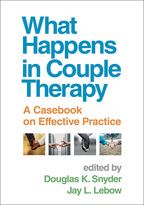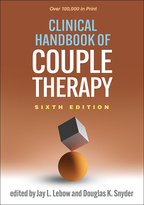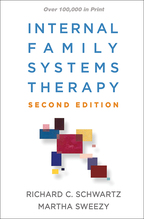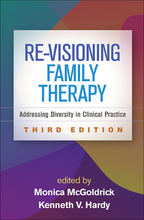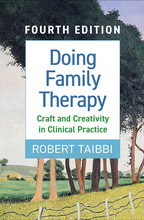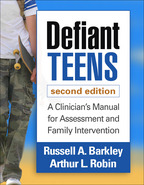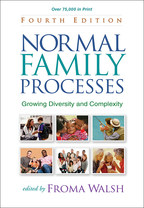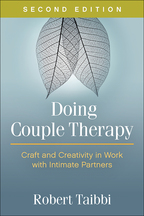Families and Larger Systems
A Family Therapist's Guide through the Labyrinth
Evan Imber-Black
Paperback
Paperback
orderJune 10, 1992
ISBN 9780898621099
Price: $39.00 228 Pages
Size: 6" x 9"
Copyright Date: 1988
Sign up for emails on upcoming titles on Families & Couples (with special discounts)!
If individuals cannot adequately be understood without reference to the family system, families themselves are comprehensible only in a broader social context. FAMILIES AND LARGER SYSTEMS is the first single-author book on families and larger systems designed specifically for the practicing therapist. It offers rich descriptions of the difficulties families and larger systems often pose for one another; presents a detailed assessment model for therapists; and provides a careful interviewing format as well as directions for designing creative interventions. Imber-Black offers a consultation model for dealing with families and larger systems who have become embroiled with one another, and methods for longer term work with those families who must engage with larger systems across significant portions of their life cycle, due to illness, handicaps, or poverty. Problems of labeling, stigma, and secrecy in families are addressed, and an entire chapter is devoted to women's issues in families and related systems.
Utilizing numerous case illustrations and interview excerpts, Dr, Imber-Black first delineates the problems common to family-larger system situations, analyzing the origins of these interactions, the assessment model and interviewing methods used, and the design and implementation of intervention. In the second half of her book, she presents in-depth discussions of strategies for improving the relationship between families and related systems. Through concrete example and hands-on analysis, Imber-Black shows how the misconceptions, assumptions, and subsequent labeling of family functioning and family members give rise to stalemated situations.
FAMILIES AND LARGER SYSTEMS provides a practical guide for all clinicians regardless of theoretical orientation. Therapists who wish to maintain a career in public sector settings, such as mental health clinics, hospitals, and schools, will find in this volume direction for effective work with families and the maintenance of good working relationships with colleagues. Therapists in private practice will discover that Imber-Black's model will aid their conceptualization of cases that have involved multiple therapists or other practitioners.
Much of the material presented will also be useful to human services workers, both professional and paraprofessional, in welfare, child welfare, probation, drug counseling, schools and other institutions. The book's ecological viewpoint, which enables such professionals to see their own position in the system, also helps them to avoid the traps of replicating existing patterns, and to position themselves for therapeutic change.
Finally, this book will be of interest to human service system administrators and program planners. The case examples offer a seldom seen view of the struggles families and multiple helpers can have with one another, while its theoretical models can be utilized to assess current inter-systematic functioning among larger systems in a community, with implications for program design and burn-out prevention.
Utilizing numerous case illustrations and interview excerpts, Dr, Imber-Black first delineates the problems common to family-larger system situations, analyzing the origins of these interactions, the assessment model and interviewing methods used, and the design and implementation of intervention. In the second half of her book, she presents in-depth discussions of strategies for improving the relationship between families and related systems. Through concrete example and hands-on analysis, Imber-Black shows how the misconceptions, assumptions, and subsequent labeling of family functioning and family members give rise to stalemated situations.
FAMILIES AND LARGER SYSTEMS provides a practical guide for all clinicians regardless of theoretical orientation. Therapists who wish to maintain a career in public sector settings, such as mental health clinics, hospitals, and schools, will find in this volume direction for effective work with families and the maintenance of good working relationships with colleagues. Therapists in private practice will discover that Imber-Black's model will aid their conceptualization of cases that have involved multiple therapists or other practitioners.
Much of the material presented will also be useful to human services workers, both professional and paraprofessional, in welfare, child welfare, probation, drug counseling, schools and other institutions. The book's ecological viewpoint, which enables such professionals to see their own position in the system, also helps them to avoid the traps of replicating existing patterns, and to position themselves for therapeutic change.
Finally, this book will be of interest to human service system administrators and program planners. The case examples offer a seldom seen view of the struggles families and multiple helpers can have with one another, while its theoretical models can be utilized to assess current inter-systematic functioning among larger systems in a community, with implications for program design and burn-out prevention.


